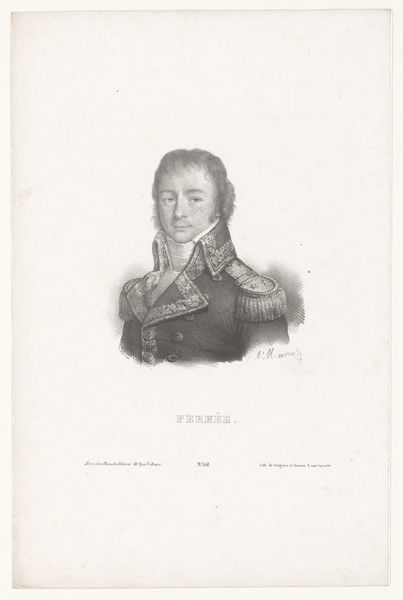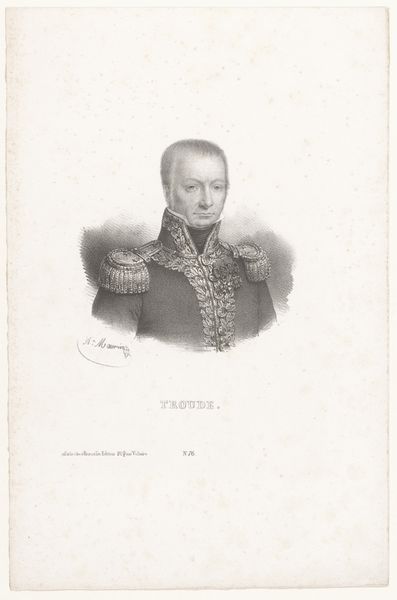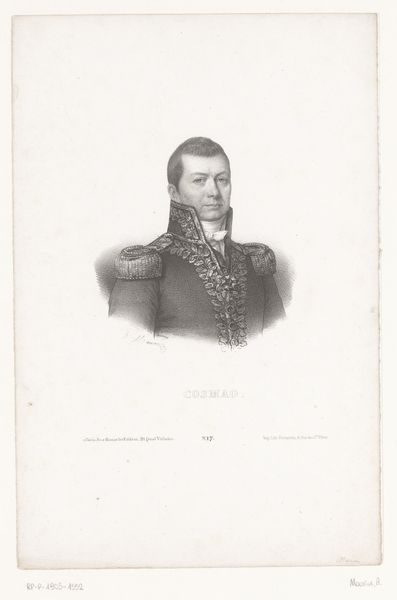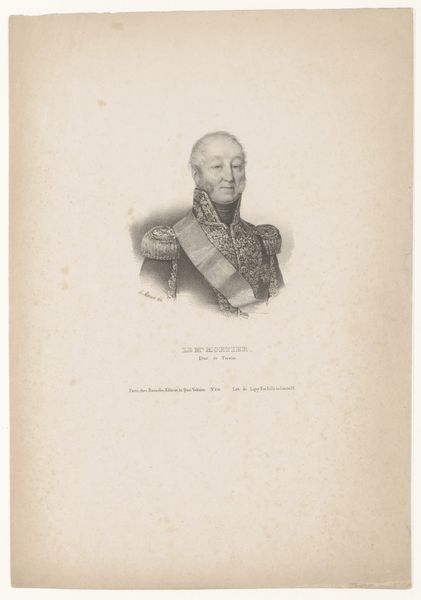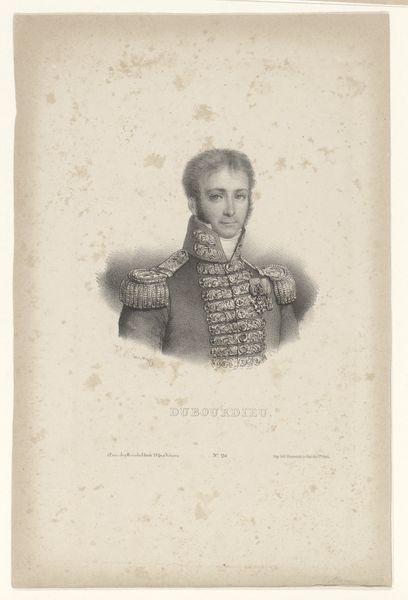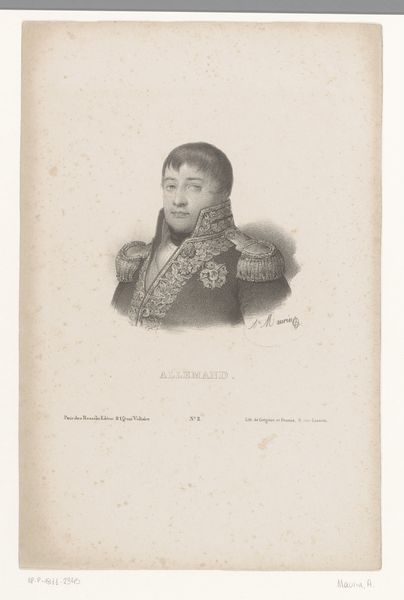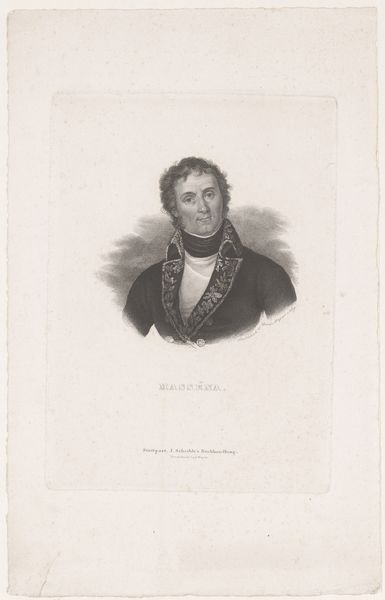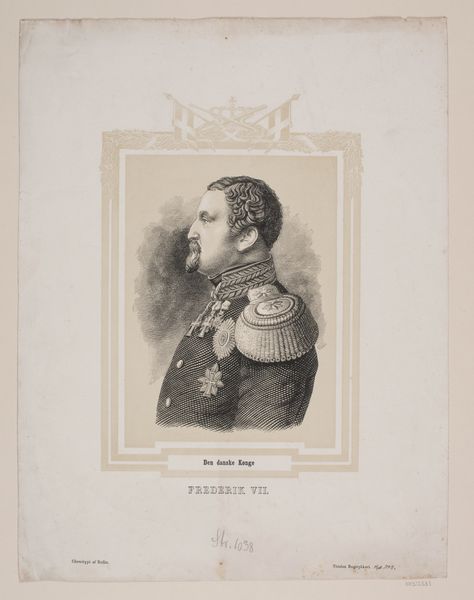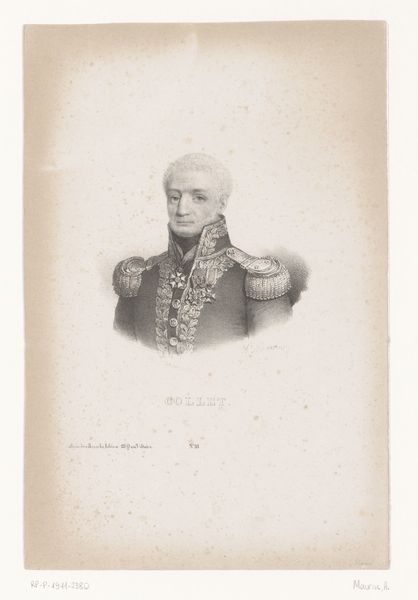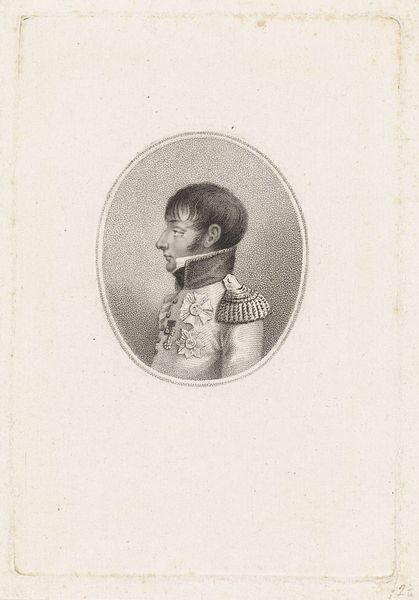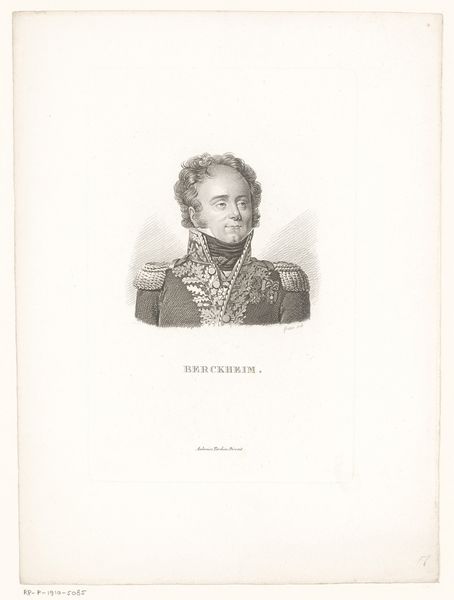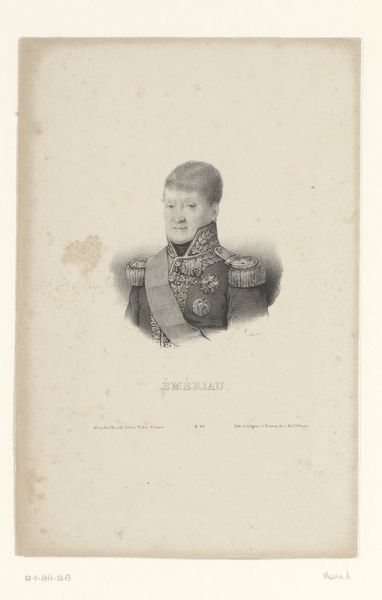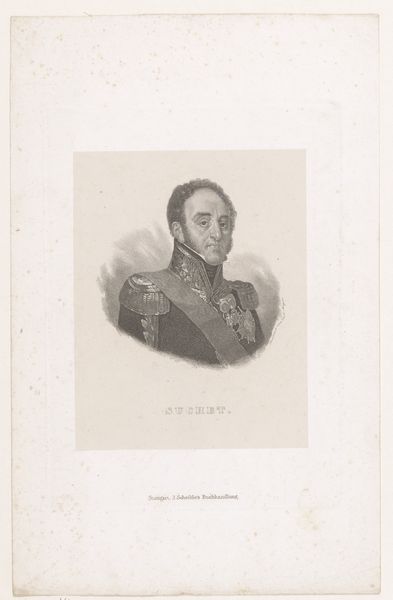
graphic-art, print, etching, engraving
#
portrait
#
graphic-art
#
neoclacissism
# print
#
etching
#
engraving
#
realism
Dimensions: height 271 mm, width 179 mm
Copyright: Rijks Museum: Open Domain
Curator: Antoine Maurin's "Portret van Adrien Joseph Segond," created sometime between 1830 and 1856, is a captivating piece. It's currently housed here at the Rijksmuseum. Editor: Immediately, I’m struck by the stark contrast—a rather formal portrait, yet there's a vulnerability in Segond's eyes that softens the military regalia. The monochrome adds to the sense of seriousness. Curator: Indeed. Let's consider the technique: the artist used etching and engraving, resulting in an intricate interplay of lines and textures that articulate form and volume within the figure. The visual structure itself emphasizes balance and clarity. Editor: I notice how those epaulettes, those highly stylized metal ornaments on his shoulders, carry a weight of expectation and the promise of protection. Aren't they almost a symbolic shield of sorts, especially set against the bare background? They act like visual anchors, really drawing in the eye. Curator: It's undeniable that Maurin uses detail meticulously. Each button, fold, and line is there to add to the subject's presentation. But beyond representing Adrien Joseph Segond, this also shows a moment in time where realism meets neoclassical ideals through the use of linear contours, clarity, and compositional structure. Editor: And consider the cross of the Legion of Honour he wears; such details offer us insights into his identity and accomplishments, allowing the artwork to function as a window into a specific socio-historical moment. He stands before us embodying all these things. Curator: I find the way light models Segond’s face especially intriguing. It is less about naturalism and more about structuring an ideal countenance, a kind of representation in line with the prevailing taste in early 19th-century portraiture. Editor: Absolutely. The details—from his neck covering and forward comb-over to the specific decorations on his military coat—speak volumes about not only him but about what society considered worthy of capturing and preserving in the collective memory. Curator: Through meticulous arrangements of lines, contrasts of tone, and material choices, we begin to decipher the very essence of the historical image. Editor: Agreed. Each of these components—a web of interlocking meanings which together reveal not just an individual, but a set of deeply-embedded values. It makes one think about all that's consciously, or unconsciously, transmitted through portraits like this one.
Comments
No comments
Be the first to comment and join the conversation on the ultimate creative platform.
